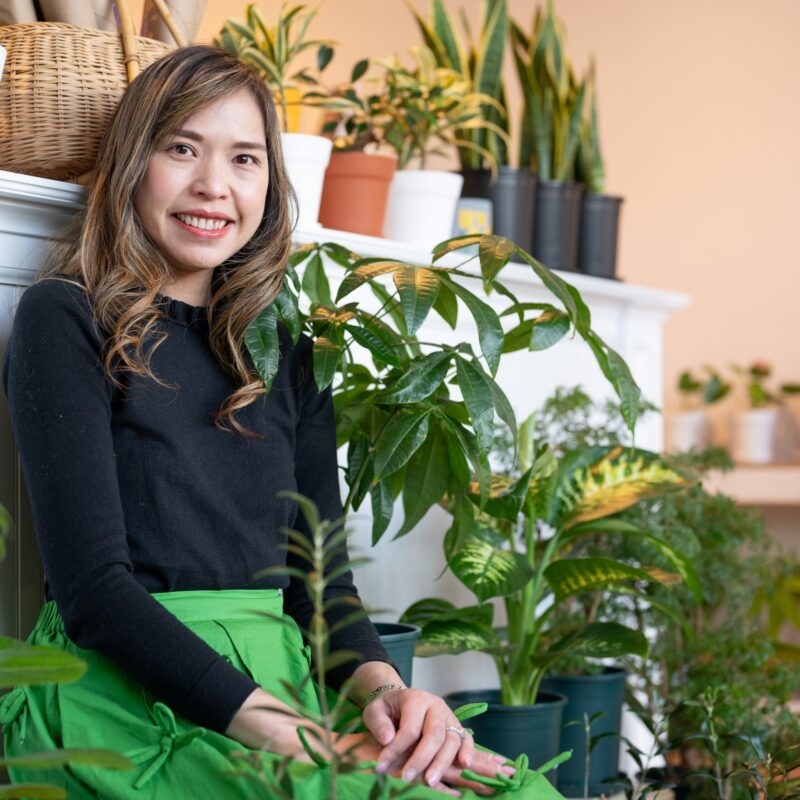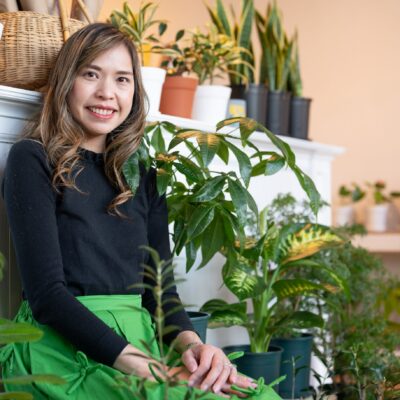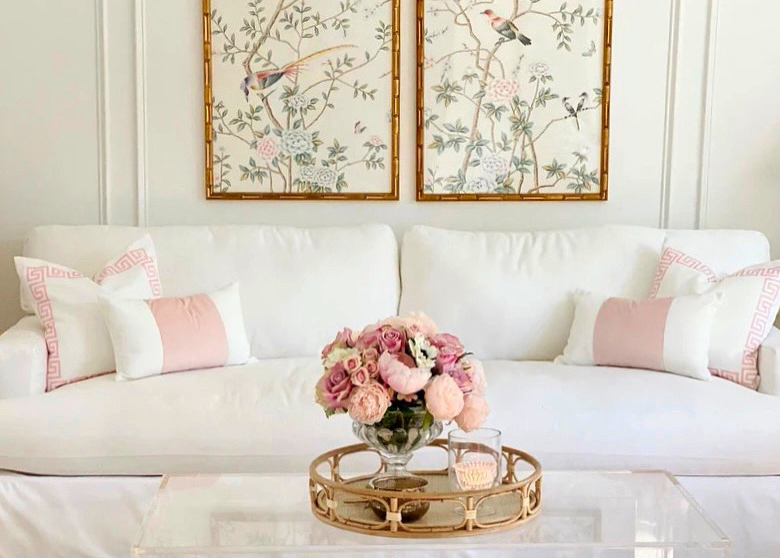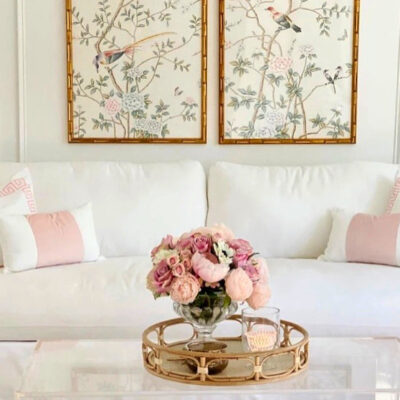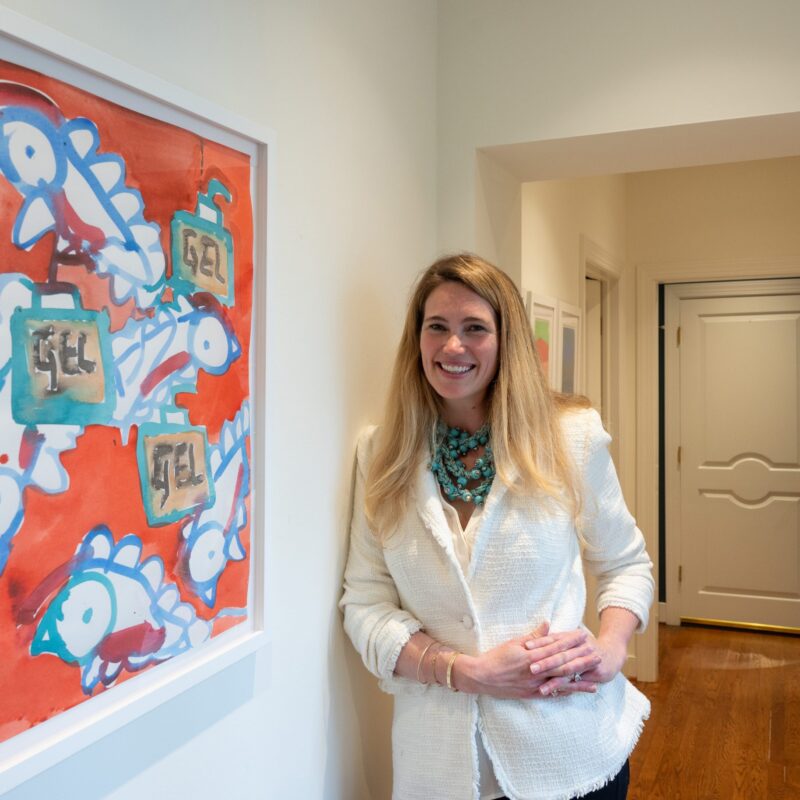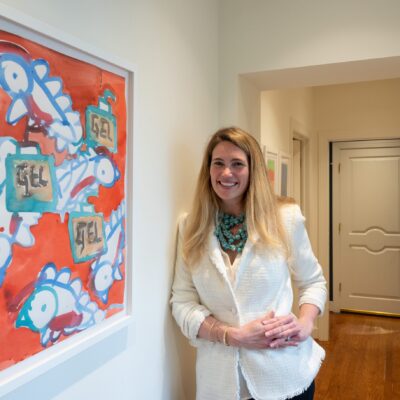Tom Davidson and Marilyn Mars love to laugh, and their house shows it. When they moved to Nelson County from Florida, they sought a modern dwelling, commissioning Marilyn’s brother Randall Mars, a McLean-based architect, to design it. Though clean lines attracted them, Marilyn says, this house—full of colorful, detailed art and objects—is anything but minimal. Warmth and playfulness are the watchwords here.
The couple met and married in Tampa, and when retirement approached, they decided to return to Virginia, where they’d both previously lived. “We wanted to get away from city life,” says Tom. Seeking a rural property of about 50 acres, they eventually found a parcel in Faber. Though it wasn’t photogenic at the time (the seller had knocked down a blighted pine forest), the pair responded to its underlying topography, which slopes down toward a creek.
It was a place where they could enjoy total privacy and lovely views. “We wanted to see where we were,” says Tom. Accordingly, one of the major requests they made to the architect was to include many big windows. At the same time, their considerable art collection demanded plenty of wall space.
Both Marilyn and Tom would need offices, and they wanted guest rooms to make visitors comfortable during lengthy stays—“more than one or two nights,” says Tom. “People can disappear from us and we from them.”
Given the setting, they also wanted to allow overnighters and dinner party guests alike to easily flow outside, to the terrace, deck and roof deck. “We didn’t want a particularly formal house,” says Tom. Mars’ solution elegantly separates public and private spaces: Common areas occupy a one-story wing with a shed roof, while bedrooms and bathrooms are in an adjacent three-story “silo.” The two volumes are quite distinct, linked by an interstitial office space, and they evince very different characters: The public space is essentially open-plan, with soaring ceilings, while the bedrooms offer enclosure and privacy.
While the couple currently uses the second floor as a master suite, they’ll be able to switch places with guests in the future if the stairs become too tough. “Randy was very accommodating,” says Marilyn, “working with us on what he knew we would want to have, down the road.”

Sliding glass doors in the upper kitchen cabinets feature glass panels by 3form that include real pressed ginkgo leaves. Photo: Philip Beaurline
The little things
The house, which the owners call Slowdog Run, contains a high level of detail, both in terms of architecture and the finishes, accents and objects that its occupants have furnished. One small example is a bumpout on the backside of the fireplace, which creates a very shallow shelf, the height of a chair rail, near the dining table. It’s a detail that could read as austere, but not in this case. “We didn’t want people to think we were too serious, so we put all this stuff out,” says Marilyn, showing off a collection of tiny, kitschy figures that live on the shelf.
Mars brought plenty of surprises of his own to this project. Inside the fairly simple arrangement of volumes that compose the house, there are many unexpected moments. One of these struck Tom soon after the house was done and furnished. He sat down on a couch, gazed toward a pair of floor-to-ceiling windows that comprise the opposite corner, and noticed for the first time the complexity of wall and ceiling angles—subtle variations on the standard 90 degrees—that faced him.
“The ‘silo’ and public areas are orthogonally organized,” explains Mars. “The office bar cuts through them, creating a diagonal element, which adds a certain dynamic character to the space.”
This occurs in what the owners call the “anteroom” to the first-floor guest suite, a space that, tucked against the staircase, could have been nothing more than a hallway. With a bit of extra square footage and abundant natural light, courtesy of the fully glazed corner bumpout, it becomes an appealing den.
The details answer practical needs, like the long wall of built-in bookcases, deep enough for two layers of books, in Tom’s office. But they also serve up pure aesthetic delight, as in the sliding glass doors on the upper kitchen cabinets, with glass panels by 3form that include real pressed ginkgo leaves.
Materials such as dark-red cherry cabinets, slate bathroom tile in variegated shades and maple flooring bring ample warmth to this home. The owners’ taste, though very contemporary, is maximalist rather than minimalist, as exemplified by the light fixture over the dining table, the Mikado by LZF—a sculptural, birdlike creation made of thin strips of wood.

A concrete mantle by Alexander Kitchin of Fine Concrete is a nod to the couple’s former home, which also featured a poured concrete hearth. Photo: Virginia Hamrick
Finding balance
Pivot doors, which are anchored by pins rather than hinges, are a striking modern touch, as are the use of split-face concrete block and vertical mahogany planks on the exterior. Mars allowed different materials to delineate the various volumes of the house, emphasizing their separateness.
Yet the Southern vernacular lives on in the sleeping porch off the upper-floor bedroom, cementitious siding (which mimics clapboard) and the standing-seam metal roofs.
Perhaps the fireplace is the element that best marries old and new. Made of poured concrete by Alexander Kitchin of Fine Concrete, it is a nod to the couple’s former home. That house, a century-old Cotswold cottage in Tampa, featured a poured concrete hearth too, though it was meant to look like stone. This one is unapologetically itself, smooth and minimal, and, as Marilyn says, “It’s such a nice counterpoint to the art.”
Outdoor spaces provide for both togetherness and solitude. “The concrete wall defining the front court is ultimately designed to support a simple flat roof structure, to shade and protect gatherings,” says Mars. “The front is very much a social space, where the back is more private and preserves the view without encouraging social interaction.”
It’s a formula that seems to be working for the residents. Contemplating their home, says Marilyn, “Tom and I pinch ourselves regularly.”
THE BREAKDOWN
Square footage: 2,400 square feet
Structural system: Conventional framing with precast concrete panel basement walls
Exterior material: Mahogany siding, split-faced concrete block, cementitious siding
Interior finishes: Maple flooring, concrete fireplace surround
Roof materials: Standing seam metal, rubber membrane
Window system: Weathershield windows and doors
Mechanical systems: Conventional furnace and air handler
General contractor: Abrahamse and Co. Builders, Inc.


